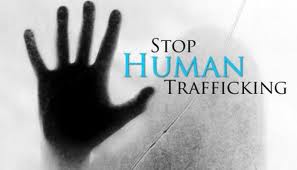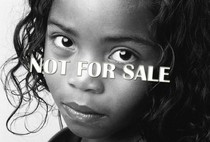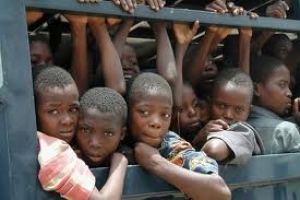
The irony of independence
“He took me across the border and sold me to the Dominican soldiers for $8,” said Andre Prevot, a young Haitian boy caught in the pervasive slave trade along Haiti’s border with the Dominican Republic (DR). Young Prevot met a man who promised him a good job in the DR; however, like thousands of Haitians, they forced him into hard labor for a meager salary.
Conditions away from home often seem better than what some Haitian parents have to offer to their children. As some rights advocates coined the phenomenon, “The grass does not have to be greener; it simply has to be on the other side.” The dissemination of this ideology in Haitian culture makes the ultimate sacrifice a relatively easy decision. Parents, mostly rural families with many socioeconomic constraints, volunteer their children between the ages of 6 and 14 to work with families and/or friends in the capital in exchange for shelter, clothing, food, and an education.
While postmodernists might find this practice outrageous, it is not far fetched nor is it a Haitian idiosyncrasy. Its deeply rooted history traced back to the West African Coastline and its profitable slave trading industry. Middlemen, in Togo and Benin, exploited families who wanted a better future for their children. They placed them in the care of family members and rarely heard from them again.
Centuries after the first waves of Africans slaves reached Haiti’s shores aboard French vessels; this tradition still constituted the norm in many cultures around the globe, including Haiti. In fact, enslavement of the poor and vulnerable is well documented in countries like Bangladesh, India, Pakistan, Nepal, and even the US.
“There is an estimated 14,500 to 17,500 foreign nationals trafficked into the United States each year,” wrote Cassandra Clifford, founder and executive director of Bridge to Freedom Foundation. “Shockingly,” she continued, “The number of U.S. citizens trafficked within the country is even higher with an estimated 200,000 American children at risk for trafficking into the sex industry.”
The pervasiveness of the problem around the Haitian-Dominican border region has, to a large extent, incorporated some degree of normalcy into the inhumane practice. A great deal of Haitians, men, women, and children go willingly across the border to work in sugar cane fields in spite of the terrible conditions imposed on them. The Guardian, a British daily newspaper wrote, “There is a thriving trade in Haitian children in the Dominican Republic, where they are mostly used for domestic service, agricultural work or prostitution.” Another report concluded, “Haiti is the source, transit and destination country for men women and children subjected to trafficking in persons, specifically forced labor and forced prostitution.”
In addition, the Organization of American States’ joint venture with the United Nations estimated traffickers illegally trafficked 30,000 Haitian children into the Dominican Republic annually, most of who worked as child prostitutes or forced into demeaning labor. Further estimates from the U.S. State Department revealed 80 percent of human trafficking victims were women and girls, 50 percent of who were minors.
The Jan 12 earthquake amplified the already herculean problem. “Traffickers smuggled 1,411 children out of the country one month after the earthquake,” said a report from the Miami Herald adding, “Figures that increased to more than 7,300 boys and girls through October,” nine months later. The sharp increase in the atrocious crimes against humanity was again highlighted in a memo the United Nations Stabilization Mission in Haiti (MINUSTAH) sent to Secretary-General Ban Ki-moon. “2,509 children were stopped without proper documentation in Port-au-Prince’s airport and along the border with the Dominican Republic in 2010,” read the memo. “Of those, Haitian authorities said that 459 were victims of traffickers.”
The U.S. State Department attributed these high numbers to the lack of legislation prohibiting all forms of trafficking, a major obstacle to progress. Its 2010 Trafficking in Persons Report further indicated, “The National Police child protection unit, the Brigade for the Protection of Minors, does not pursue forced labor or forced prostitution cases because there is no statutory penalty.”
Moreover, a video filed by British daily The Telegraph earlier this year exposed yet another dimension of Human trafficking in post-quake Haiti. “People posing as NGO officials, pretending to be relatives or unscrupulous Haitians from abroad are targeting tens of thousands of children living in temporary camps,” the report pointed out. That revelation unveiled the scope and magnitude of trafficking in persons in Haitian life.
While a State Department report inferred the DR “Does not fully comply with the minimum standards for the elimination of trafficking and is not making significant efforts to do so,” outgoing Prime Minister Jean-Max Bellerive admitted “There are people on the Haitian side who are profiting because they are the ones who organize the trafficking.” Both governments signed treaties and laws to fight the plaguing problem, yet, explained Bellerive in this article; “Neither government has seen the border plague as a compelling interest.”
As the human trafficking business prey on Haiti’s misfortune, activists and abolitionists must implement effective strategies to combat these atrocious opportunists.
Recommendations from the State Department emphasized:
• Enacting legislation criminalizing forced prostitution and all forms of forced labor, including domestic servitude, with penalties that reflect the heinous nature of this human rights abuse.
• In partnership with NGOs, adopt and employ formal procedures to guide officials in proactive victim identification and referral of victims to available services
• Provide in-kind support for victim services
• Improve access to quality education for all children
 While commendable, this list failed to provide preventive measures, a viable solution to the problem. Enormous difficulties surface when trying to convince Haitian lawmakers and police officers, recipient of human servitude themselves, to enact legislation eradicating services they perceived as normal. In fact, a great deal the abused consider these treatments as a way of life. Given the complexity of the problem, many aid organizations even attempted to circumvent Haitian laws to smuggle children outside the country, justifying one crime with another.
While commendable, this list failed to provide preventive measures, a viable solution to the problem. Enormous difficulties surface when trying to convince Haitian lawmakers and police officers, recipient of human servitude themselves, to enact legislation eradicating services they perceived as normal. In fact, a great deal the abused consider these treatments as a way of life. Given the complexity of the problem, many aid organizations even attempted to circumvent Haitian laws to smuggle children outside the country, justifying one crime with another.
Without sensitizing the Haitian population to the severity of modern day slavery and trafficking in persons while creating a national identification system to account for all citizens, women, girls and boys at risks will remain faceless and voiceless; thus, perpetuating their infernal environment depicted in this 2005 news report:
• “On market day in Dajabón, a bustling Dominican town on the Haitian border, you can pick up many bargains if you know where to look. You can haggle the price of a live chicken down to 40 pesos (72p); wrestle 10lb of macaroni from 60 to 50 pesos; and, with some discreet inquiries, buy a Haitian child for the equivalent of £54.22.”
Such is the irony of independence for the first black republic of the Western Hemisphere and sadly, these atrocities worsened over the last six years.
Author’s Note: Many thanks to Cassandra Clifford who inspired this article.